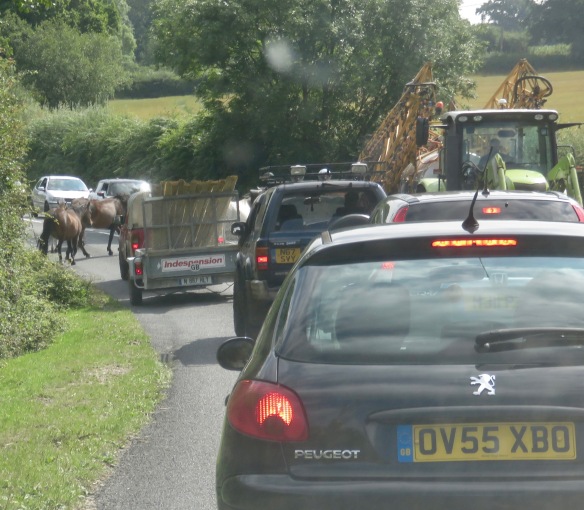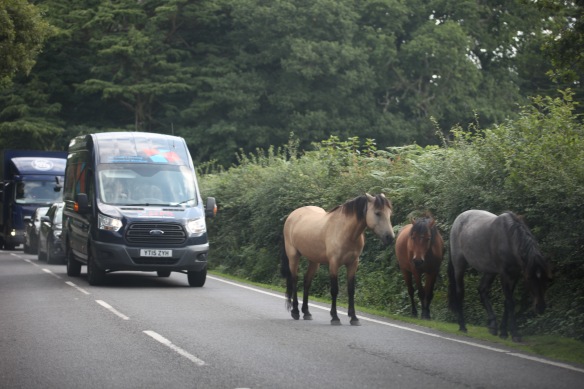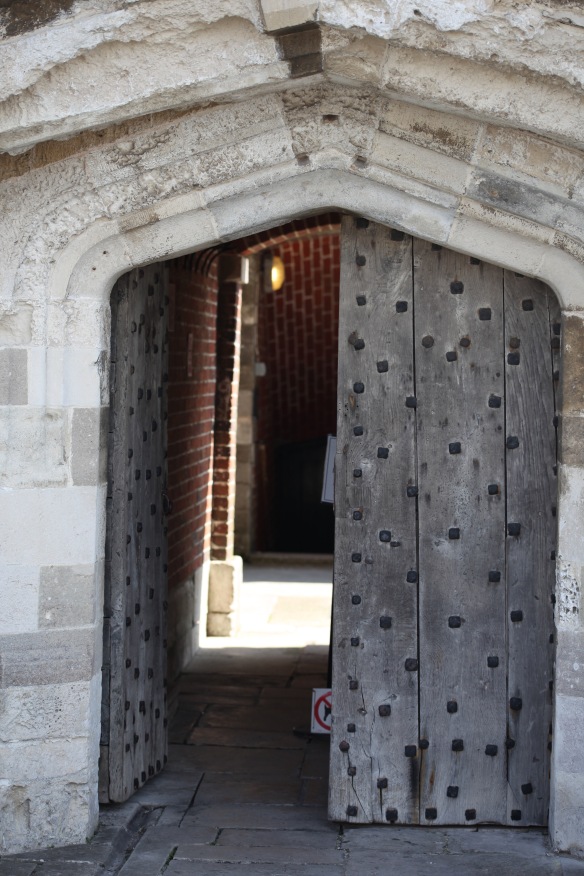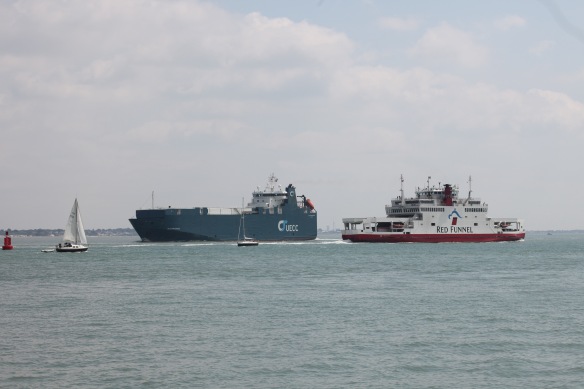CLICK ON IMAGES TO ENLARGE. REPEAT IF REQUIRED.
Aaron, this Sunday, had removed two overhanging branches from a neighbours fir tree, and had dismantled an old temporary greenhouse cobbled together from panels found on our plot. Early this morning we chopped the branches into manageable chunks to fill an orange bag and, along with some of the panels, and a rather rancid bathroom cabinet left by our predecessors, removed them to Efford Recycling Centre.
This effort entitled to us to spend the rest of the morning in the forest.
We consider ourselves fortunate to have reached Beaulieu and traversed it. The ponies had other ideas. Switching from side to side of the narrow approach road, they caused the longest tailback we have ever experienced here.
One animal broke into a run when it saw that its companions had
reached the wide verge, just outside the village, where we normally see them. If you are bored with all these rear views, imagine what else i was going to do as we fell into line? Do you know that number plate off by heart yet?
Fortunately, once through Beaulieu, we were travelling in the right direction to be unhindered by a less mobile group.
After this, we set off for Calshot Castle which was open for visitors. Originally built for King Henry VIII the castle was extended and refurbished in the 18th, 19th, and 20th centuries.
The entrance door above leads to the shop where admission tickets may be bought. My first thought was to pass the young woman seated at her desk studying her mobile phone and approach the young man in the corner for tickets. Rapidly reorienting myself I purchased our admission from the young lady, who was, in fact, most engaging. In particular, she had a very tactful way of asking whether we were pensioners, and didn’t use the word once. The gentleman was wearing an R.A.F. Medical Corps uniform.
Entering a room marked ‘Cell’, I found myself in an office, upon a shelf in which was evidence of a recent decapitation.
Through the cannon turrets
I spied a paddle boarder who wouldn’t have had much chance of penetrating the defences.
We ascended steep stone steps leading
eventually to a large central room that had, in the last lustrum of the 19th century, been converted to a barracks.
Each man was allocated his own meagre space containing a metal framed and sprung bed that didn’t look too comfortable.
The room contained a coal burning stove fronting the repaired remnants of the Tudor fireplace.
A number of stone-roofed alcoves
were brightly lit by windows from which I could observe visitors watching a container vessel
and a kayaker down below.
What, I wondered, had attracted the attention of these two pointers? In the foreground of this shot lies the moat that surrounded the castle.
A corner on this level contained a garderobe. This, primarily, is a locked chamber containing dress and other stores; by extension a bed-chamber, or a privy. This was a very dark room, and the only image for which I used flash. Otherwise you would not have seen the hole, once covered by a wooden seat, which received human excreta to slide down into the depths below.
The final set of steps bore a sign warning of the uneven roof above. I was more concerned about the steps themselves.
They led to a stout iron door, one of several that stood one the gun platform up there.
Here is evidence that Jackie made it to the top.
These images of stored boats, passers by,
wooden stakes,
and a family investigating the lifeboat centre we have to suffice for mine.
Our trip ended with a brunch in the Activity Centre Café, from which I watched a ferry boat and a couple of yachts crossing the path of a car transporter;
and a family group enjoying their lunch in the sunshine.
This evening we dined on Mr Chan’s Chinese takeaway with which Jackie drank Blue Moon and I finished the Bordeaux.

















































